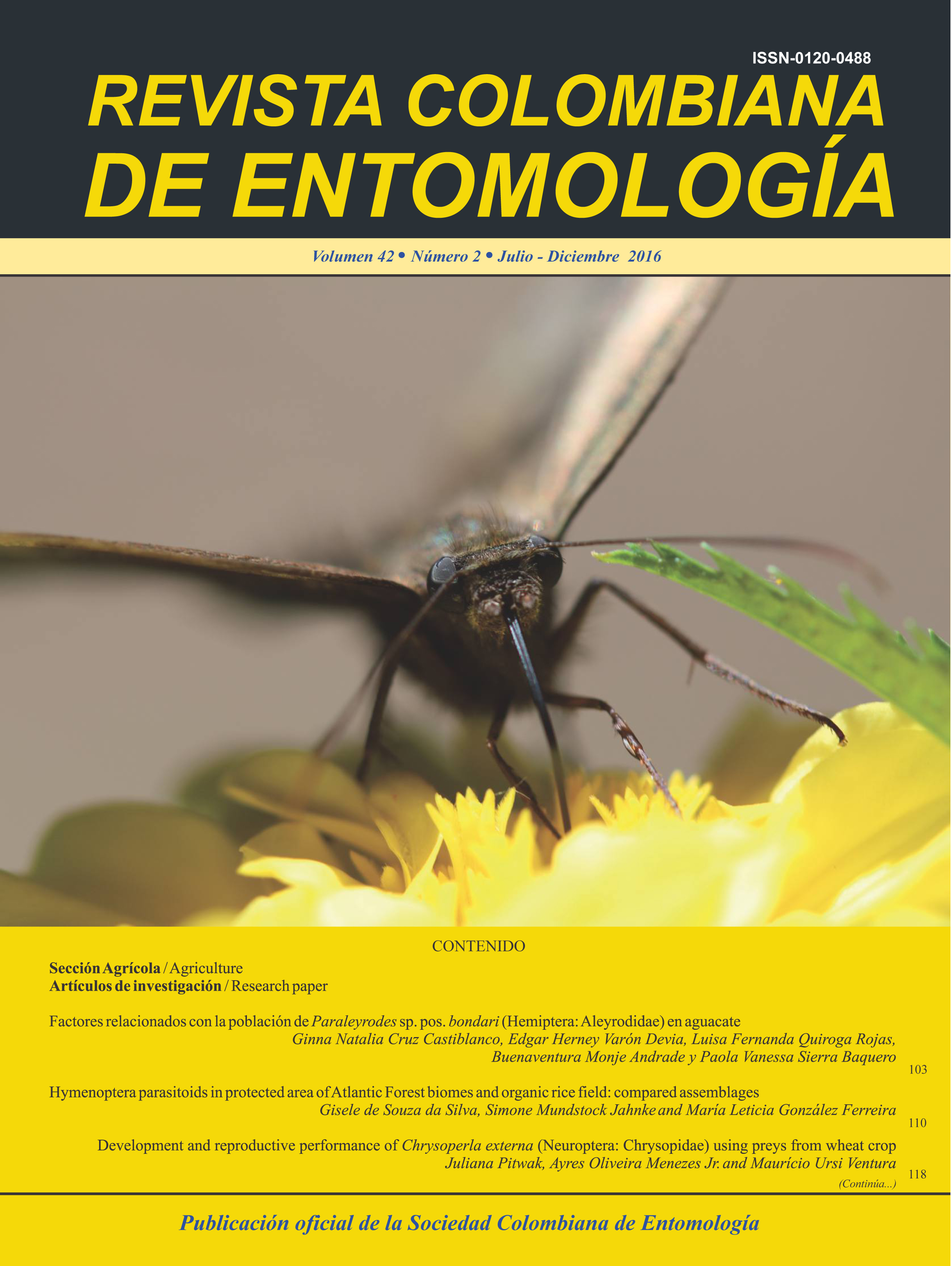Natural enemies of Stenoma cecropia (Lepidoptera: Elachistidae) in oil palm, in the southwest of Colombia
Keywords:
Biological control, Faunal analysis, Crematogaster, Brachymeria, Rhysipolis, Isaria sp.Main Article Content
Stenoma cecropia infests new plantations of hybrid oil palm (Elaeis oleifera x E. guineensis) in Tumaco (Nariño). These infestations are causing defoliation of economic importance to the oil palm. For this reason, the aim of this study was to determine the biotic and abiotic factors affecting populations through fortnightly sequential sampling, following a 2 x 2 moving displacement system, which sampled every two palms and every other line in a one hectare oil palm plantation, counting the number of live and dead individuals present in the 17th and 25th S. cecropia leaves of each palm evaluated. Results indicate that S. cecropia is attacked by a variety of predators, parasitoids and entomopathogens. Among the former are the spiders (Araneae), bugs (Reduviidae), wasps (Vespidae), and ants (Formicidae), with Crematogaster being the most important. Among the parasitoids, Brachymeria sp. and Rhysipolis sp. were most abundant. These species require the nectar of plants such as Melanthera aspera, Solanum quitoense, Emilia sonchifolia, Lantana camera, Cassia reticulata, Stachytarpheta cayennensis and Urena lobata, for food until the adult stage. An entomopathogenic fungus was also detected infecting the larval stage and was identified as Isaria sp. Crematogaster sp. predation on larval stages of S. cecropia was estimated to be 42 %. Parasitism by Brachymeria sp. In pupal stages was 16.8 %, mortality caused by Rhysipolis sp. on larval stages was 3.5 % and mortality by Isaria sp. Was 1.5 %. It is concluded that these biological control agents are important in the regulation of S. cecropia populations in oil palm plantations in Colombia.
Downloads

This work is licensed under a Creative Commons Attribution-NonCommercial-ShareAlike 4.0 International License.
Authors retain the copyright on their work and are responsible for the ideas expressed in them. Once a manuscript is approved for publication, authors are asked for a publication license for the term of legal protection, for all territories that allows the use, dissemination and disclosure of the same.

